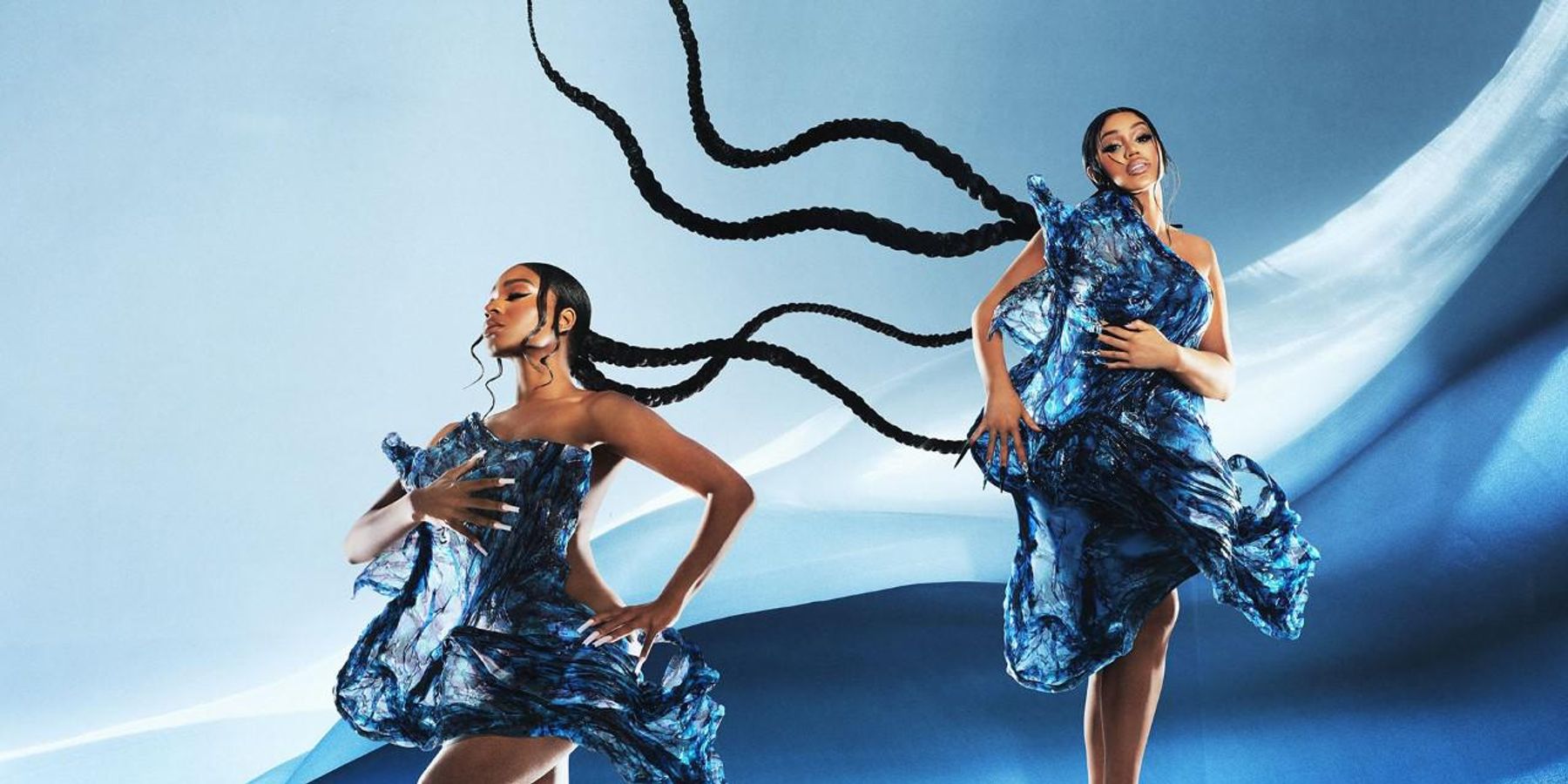
Like Olivia Newton John and Dua Lipa, Kim Mesches wants to get physical. "I wanted to create an all-encompassing room in which people could feel and touch the pieces." The pieces in question, made primarily using resin, are on display at his debut art show, Spectre. Each of the 20 pieces are methodically backlit to highlight their intricate detailing which looks like liquid plastic, according to Mesches... or mucus, according to me. "When displayed they feel eerie and make you think there should be a body there but there isn't," he says. But there can be, and has. Normani and Cardi both wore pieces from the collection on the cover of their song, "WIld Side." And, most recently, Gossip Girl star Jordan Alexander wore a piece on the cover of Grazia.
But art is just part of the equitation for this multi-hyphenate who rose to prominence in the styling world before starting his own eponymous label, a genderless, zero-waste athleisure brand with inclusive sizing ranging from XS-5XL. The Coveteur even named him as one of 10 rising designers that are changing the face of fashion. If that weren't enough, he also has his own line of rolling papers called Haus of Karyn as well as his first novel, Fashion Boy, which he self-published during quarantine. "It's definitely tricky because it can be a jack of all trades, master of none kind of thing," he admits, but from the looks of it, his mastery seems far-ranging, with no signs of blips or bumps.
Below, Mesches talks about about making art during a global pandemic, tattoos, his famous grandfather, smoking weed and finding inspiration in Alexander McQueen.
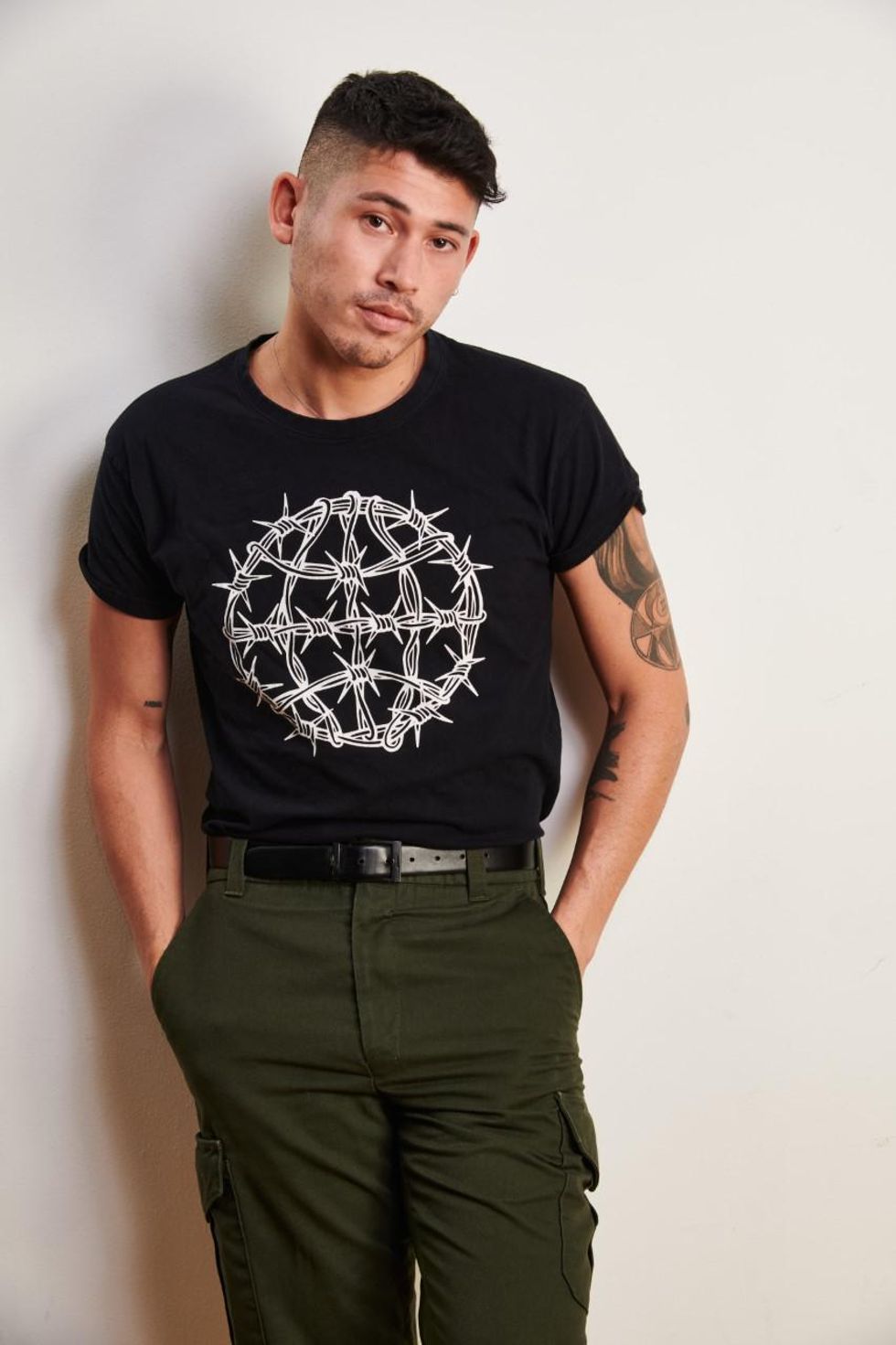
I want to start by congratulating you on your show: Beautiful art, great drinks and cute boys. I want to ask you about that show, specifically, because it's the first time I've been to a show in over a year and a half, as I'm sure was the case for many. What was it like watching your work being seen by real people in a space together after all of this time?
It was a nice culmination of the way my work has progressed over the last year and some change. It came together because I wanted to find a platform where I could have it all in one spot and have people see that this is kind of the range of work that I can do.
You're like a multi-hyphenate, you do a lot of things — designer, stylist, among many other titles. I feel like one downside of that is that people can perceive you as being good at a lot of things versus great at one thing. Do you see there being any negatives to wearing so many hats?
I would say I'm more an artist than anything. Every piece of sculpture I make has to do with my aesthetic, my art. My art encompasses everything, including the styling. I do styling for a day job and I work with big clients and it's really nice, but it's also my creativity coming through with how I style and how I put things together. It's definitely tricky because it is a jack of all trades, master of none kind of thing. I just really enjoy being super busy and love having different platforms and avenues to express myself through.
What do you think about the term wearable art versus fashion?
They are wearable art at the end of the day. They're not fashion pieces that you wear every day to the grocery stores, these are crazy pieces of art not unlike Schiaparelli or Iris van Herpen. Fashion is taking that turn where everybody is on the red carpet wearing surrealist-looking things. None of it's the same anymore, it's more of a fantasy. There are a lot more influences from art in fashion now.
Yeah, I agree with you. What do you think is the genesis of that? I'm thinking of that vintage Mugler look that Cardi wore on the red carpet at the Grammy's in 2019. Artistic movements are a response to societal change often. Is there something that you see as precipitating this?
I think it's an evolution. People are starving for art. Everyone is like, "Fuck it, I wanna just be out and about, and wear the most, do the most and look the most." I think that's where it's going, and I really appreciate that. People are now putting so much more effort into shock and awe and creating artistic looks, changing the game again, which is exciting, but I definitely think it's a push and pull from our last year of nightmare nothingness.
How have the last 18 months changed you? I don't mean artistically, that's the easy response. I'm thinking more spiritually, emotionally. How has this time, and all of the time spent in isolation and time spent in your own head, changed you?
I think I benefited from it. I'm so busy all the time. And I love being busy, and I thrive on being busy, and I thrive under pressure. The last 18 months, though, allowed me to mentally reconnect with who I am and who I started in this industry as. I wanted to refine that person. So, it kind of helped a lot.
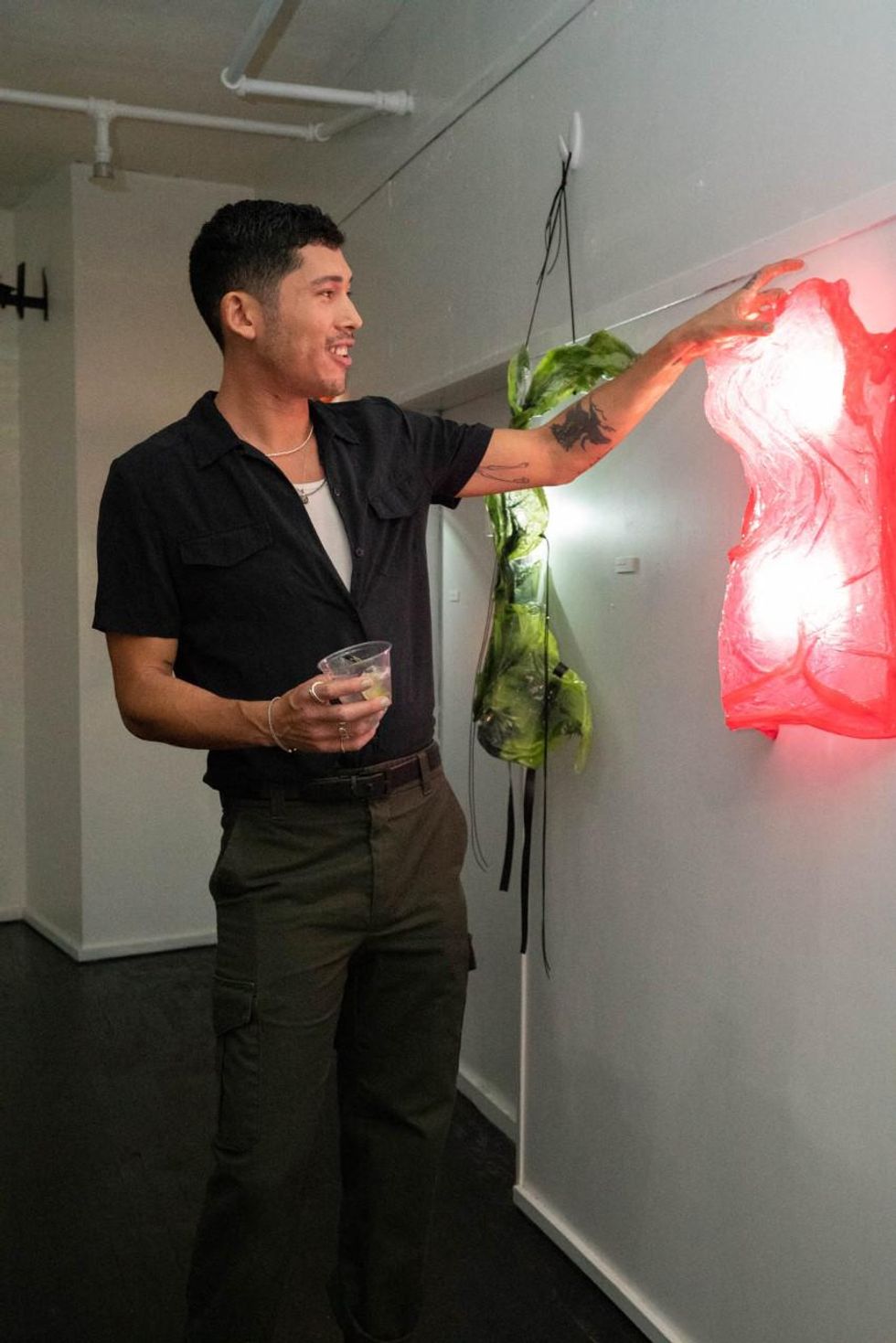
To go a little deeper, if you will, when you say refine that person, who was that person? Or who is that person?
When I started in this industry I was young. I was 19 years old, and I was fearless. I didn't give a shit about meeting new people, I wanted to always be out and I wanted to hustle and, like everyone else, we get locked into a routine, we do our own thing for a while, and then you end up plateauing. And I remember always thinking, "What else can I do?" During COVID, I felt that spark reignite, like, "Wait, I can do a lot more than this, I'm only pushing my creativity to this degree when I can totally go up to here. I'm barely scratching the surface of what I'm capable of." And it's kind of like just a jumping off point right now. It's giving me that spark to think outside the box again and not be so confined with the limitations I put on myself.So you're having a big moment right now with the Cardi and Normani cover, and then you have Jordan Alexander for Grazia. I'm just curious, what's that like for you, to see your work on others and have it be out there for criticism?
I'm not very affected by it because I have faith in it. I did my best to create it, so if someone doesn't like it... someone doesn't like it. Oh well. What can I do about that? So, it's tricky because there's a part of me that's like, "Oh fuck, what's gonna happen if someone doesn't like something... am I gonna be blacklisted?" But I'm a firm believer that things are gonna happen the way they're gonna happen. If someone ends up liking it, they like it, if they don't, then at least I liked it.Talk to me about how that Normani/ Cardi moment came to be? Because that placement of a single cover is nothing to scoff at.
I do these editorials where I make these pieces, I've been doing them for years, and they get published to different magazines. And this one account, @upnextdesigner, found my editorials through a stylist and posted them. And then from there, one of the stylists from Cardi's team, or a stylist's assistant, someone, contacted me and they're like, "Hey, we want to pull this, this, and this, we're not really sure what it's gonna be for, but we really love it, can you send it to LA?" And I was like, 'Sure, why not?' They said they're gonna use it potentially for Normani, potentially for Cardi, and I was like, "Okay, suuuuure." And I'm a stylist, I know how fast things change on set, so I don't get excited until I see the physical evidence. So I got a call from the assistant saying, "So, it looks like we're gonna use it, but you can't use it for anything else this month, if we're gonna use it." I was like, "That's fine, you guys have it!"
Right, it's not like there's a replica look chillin' in your studio.
And then Albert, the guy behind @upnextdesigner, called me while I was on a little vacation in France with my friends, and he was like, "Did you see it?" And I was like, "What...?" And, mind you, I had watched the video for Wild Side that morning because I had heard he was gonna use it on something around July 15. And he's like, "It's the fucking album cover, Kim!" I was like, "Holy shit!"
What is it like shipping a piece of art like that? I'm just curious, because it's so 360, it can't really be flattened...
It's... expensive. Does not ship easily.
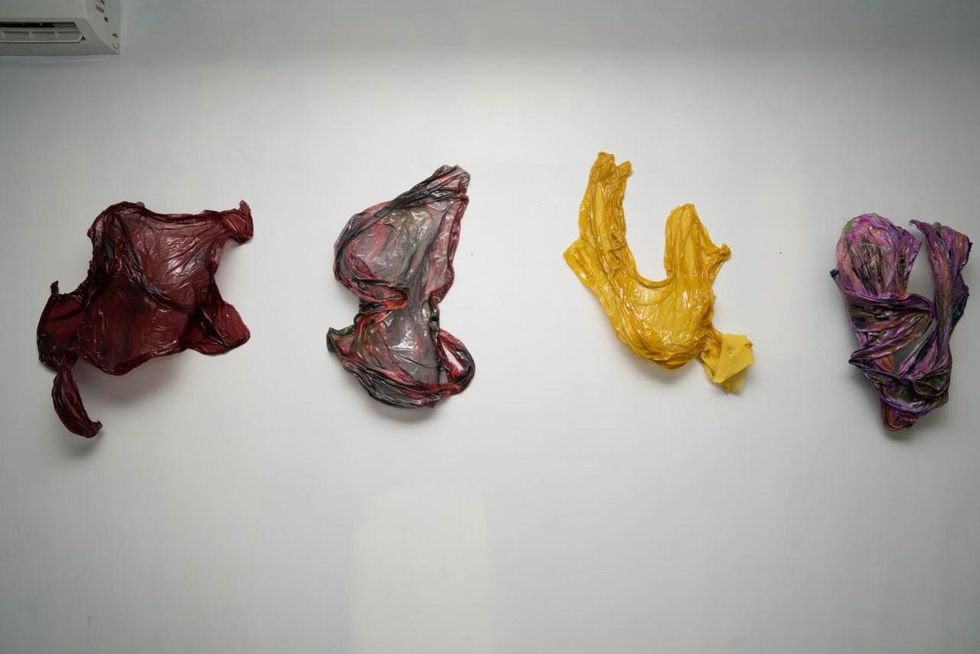
But do you ever get worried? To me, in addition to being just a large piece, it's also, I imagine, very delicate.
Actually, it's not. It's really very durable, surprisingly. They've come back kind of deformed, but you can heat them up and reshape them because it's like plastic, pretty much. It's an epoxy resin that's used on them, so if you kind of mold them again, they'll take shape within a couple of hours, so that's how, if we have a shoot and it doesn't fit right, I can heat it up and mold it to shape.
So, you've got both of these things going, and then there's the rolling papers. A lot of people associate getting high with laziness or the munchies, et cetera. Do you find that getting high can have a positive impact on the creative process?
Hell yeah, of course! I've been enjoying pot since I was 14 years old, but I'm also a very productive smoker. It depends on your strain and it depends on what you're going to use it with. It helps me, that's for sure. I don't want to sound like a stoner, but it does really, really help hone in on the creative process and allows you brain go a little bit. Once I start drawing or sketching or doing whatever, if I'm a little stoned, it really takes my brain into more of a focused point of view. Otherwise I'm getting distracted by my phone or this, that and the other thing. You just have to find the right strain.
Tell me the story behind your most meaningful tattoo.
Oh, good one! The one on my arm here is a piece of art that I did with my grandfather, who's one of my biggest artistic influences. It's actually a tree from a painting he did in 1956. He came with me to get it. It was actually really funny, because he was trying to tell the tattoo artists about the brush strokes, and the tattoo artist was just like, "That is not how tattoos work, it's not a paint brush." I also have a big portrait of him in my apartment. I think it's a really healthy reminder that, what he was pushing, it lives on. His messaging lives on, his skills live on, his work... It's just lovely. It's good to have it there. It's a great reminder to not lose what he stood for.
What was your relationship like with your grandfather? It's interesting, you come from a lineage of artists, so what did he teach you about the way you approach art?
So much. He was a fearless painter and artist. He created, unapologetically. I think I got that gene. He never second-guessed any of his brush strokes and he was also very bold with his messaging, which I love. All of his paintings have a social commentary about them; they say something about society as it is at that moment. If you look back at his work, there's pieces from the 60s, during the draft, there's pieces about human rights, there's pieces from World War II, there's pieces about when Bush was in office during 9/11. He was one of the most fascinating people because he put that into his art, and it's very apparent through his symbolism, his technique, and it's really, really bold and kinda dark, but also realistic. I definitely got his blind faith in himself. That sounds maybe a little cocky, but I do have faith that I can pull something off when I am creating something.
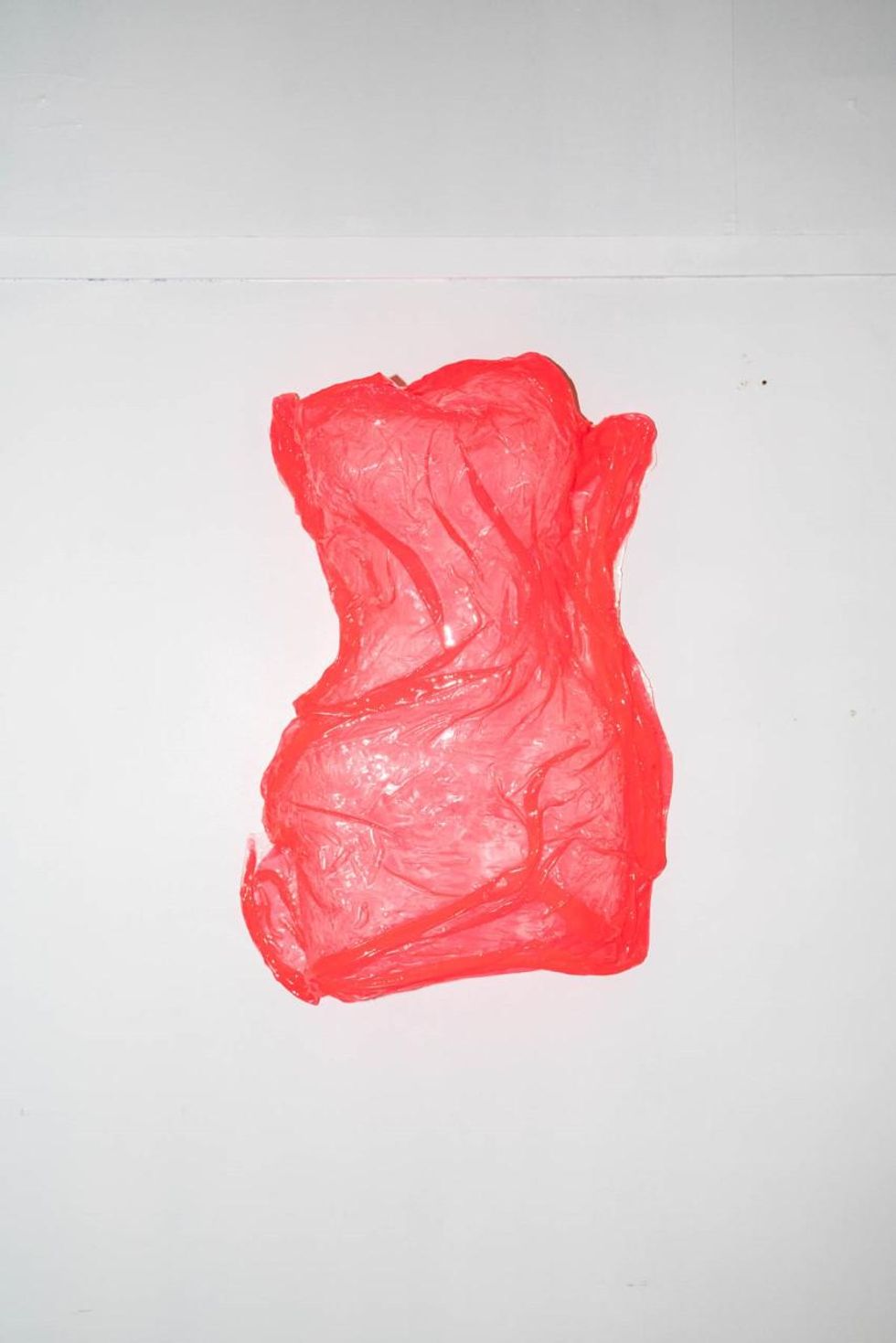
Do you remember the first piece of fashion or art that was intriguing to you as a child?
McQueen. Oh my God, my first love, my forever love! I have his name tattooed on my arm. I love him, RIP, but yeah. I remember going down a rabbit hole when I first started working in fashion. I didn't know too much, but I had gotten an internship working for this designer and I just needed to learn more, I hadn't got into FIT yet, and I was kind of still learning everything. It was just mind-blowing to me that someone could be so artistic, dark and beautiful at the same time. It was so inspirational.
The director, Barry Sonnenfeld was on What What Happens Live, he's in New York City for the first time in a while, and Andy Cohen asked, "How are you liking being back in New York?" And his response was not favorable, he said something to the effect of, "it's very depressing here." I was struck by that because the messaging right now, for many people, seems to be that New York is alive. New York is kicking. What is your perspective, how do you see the state of New York in this present moment?
Oh my god, disagree with whatever his statement was. New York is more alive than ever. It's crazy, this summer everything was happening. I think it's more alive now than it has been pre-COVID. I think people are really optimistic. Yeah, I completely disagree with that.
Photos courtesy of Kim Mesches
Related Articles Around the Web